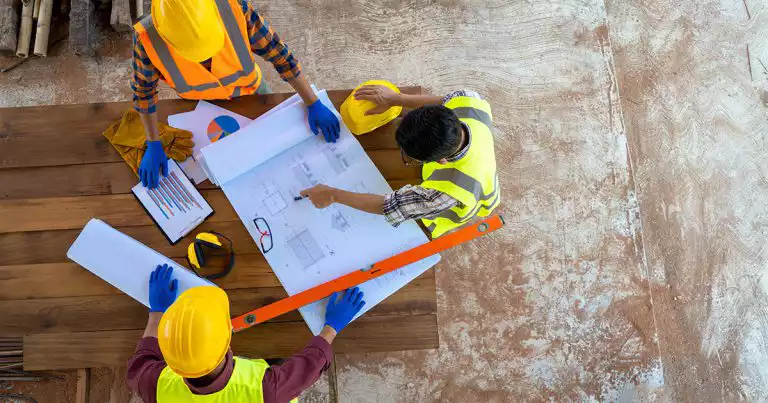How Healthy Homebuilders Go Above The Home Energy Code
4 minute read
As industry experts, we hear a lot of questions about home energy codes, construction specs, efficiency programs, and code-compliant products. Here are the answers to how healthy homebuilders go above the home energy codes.
What are some of the notable home energy codes?
Over the past several years, homebuilding codes, standards, and programs have been updated by the IECC, the EPA, ASHRAE, and the California Energy Commission. Additionally, mandatory standards and paths to compliance can also vary by region, state, and even municipality.
IECC
The International Energy Conservation Code—America’s model energy code—sets minimum efficiency standards for new construction. Every three years, officials from municipalities and states across the nation vote on proposed changes to the IECC to incorporate new building technologies and practices. These proposed evolutions ensure that new American homes and commercial buildings meet modern-day minimum levels of safety, fire protection, and efficiency.
The 2012 edition—called “The 30 Percent Solution”—was the first comprehensive efficiency proposal ever offered. The 2015 and 2018 IECCs offered smaller efficiency gains while the 2021 Code aims to achieve greater savings over the 2018 version and includes a Zero Energy Homes Appendix.
EPA
The Environmental Protection Agency’s Indoor airPLUS is a voluntary partnership and labeling program that helps new home builders improve the quality of indoor air by requiring construction practices and product specifications that minimize exposure to airborne pollutants and contaminants.
The EPA created Indoor airPLUS to help builders meet the growing consumer preference for homes with improved Indoor Air Quality. The home must first earn the ENERGY STAR® Certified Home label—the government-backed symbol for energy efficiency.
To earn the Indoor airPLUS label, the builder adds additional home design and construction features to help protect qualified homes from moisture and mold, pests, combustion gases, and other airborne pollutants. The home must be inspected by an independent third party to ensure compliance with the EPA’s rigorous guidelines and specifications.
ASHRAE
The American Society of Heating, Refrigerating and Air-Conditioning Engineers—with its focus on building systems, energy efficiency, Indoor Air Quality, refrigeration, and sustainability—is shaping tomorrow’s building environment today
The ASHRAE 62.2 standard is the recognized standard for residential ventilation system design and acceptable Indoor Air Quality. Expanded and revised for 2019, it specifies minimum ventilation rates and other measures in order to minimize adverse health effects for occupants.
California Energy Commission
The California Energy Commission’s Title 24 is updated every three years to ensure that the latest technology is being leveraged to achieve energy efficiency and preserve outdoor and indoor environmental quality. The 2019 update focuses on several key areas to improve the energy efficiency of newly constructed buildings as well as additions and alterations to existing buildings.
One notable section of Title 24 addresses air filtration, requiring minimum efficiency reporting value (MERV) 13 filters or equivalent in heating, cooling, and ventilation systems for residential homes.
Why is ventilation so important in modern construction home energy codes?
While energy codes have had positive influences on IAQ requirements, they have also created homes that are so tight for the sake of energy efficiency that IAQ needs more attention than ever before. However, a builder should not let a home energy code alone dictate their IAQ selection. In some areas, exhaust ventilation is all that’s required to meet home energy codes. However, AprilAire always recommends healthy homebuilders utilize supply-side ventilation.
The AprilAire Model 8145 Fresh Air Ventilator, when properly installed and set, will meet the mechanical ventilation requirements of:
- 2012, 2015, and 2018 International Energy Conservation Code (IECC)
- EPA Indoor airPLUS
- ENERGY STAR® for Homes
- ASHRAE 62.2
- California Energy Commission’s Title 24
Why is it important to install filtration products that adhere to Title 24?
The California Energy Commission standards have placed the state at the forefront of energy efficiency, sustainability, energy independence, and climate change issues, providing a template for national standards within the U.S. as well as other countries. Even if you don’t currently fall under the regulatory requirements of Title 24, building to that standard will put you at the leading edge of Healthy Home construction and prepare you for a future where more states will likely follow the same or very similar standards.
Most importantly, the requirement of MERV 13 air filters—which offer highly efficient home and system protection for up to 12 months—means your customers’ homes and families will be protected from common airborne allergens and asthma triggers, like dust, pet dander, mold, and more.
Why is it important to consider programs aimed at energy efficiency?
Energy efficiency programs help drive the implementation of projects and products that minimize or reduce energy usage, providing savings for homeowners as well as the environment. On the federal level, the ENERGY STAR® program provides rebate incentives as well.
Additionally, three states—California, Massachusetts, and New York—along with the city of Denver have already incorporated, or are looking to incorporate, Passive House design principles into their home building codes and policies. These principles include:
- Superinsulated envelopes
- Airtight construction
- High-performance glazing
- Thermal-bridge-free detailing
- Heat recovery ventilation
How can my project be certified?
Healthy homebuilders interested in certifying their homes should work with their energy rater partner. Resources from RESNET and the EPA can also help point builders to certified raters. Builders can even check the standing of their current rater and see what certifications he or she possesses.
The graphic below illustrates how each program builds on the one before it. So, if you’re building an ENERGY STAR® home, inquire about IAP or Net Zero with your energy rater.
In short, resources from RESNET, the EPA, and the Energy & Environmental Builders Alliance (EEBA) are all great ways to find how you can take your home to the next level in regard to energy, health, and overall performance.
Strengthen Your Reputation as a Healthy Homebuilder
Home energy codes are designed to ensure achievable levels of efficiency and are a great starting point for builders like you. The best builders don’t simply choose products to meet these codes—they choose them because they know that quality air systems can also protect homeowners’ health along with the well-being and preservation of the home overall.
By constructing homes that meet or exceed codes for Indoor Air Quality, you can distinguish yourself and build a reputation for designing superior homes.
AprilAire provides solutions, systems, and support so you can deliver on the promise of a Healthy Home to your customers. From technical resources to educational content, we’re here for you.
Contact us today to get started with professional-grade Healthy Air solutions for your homebuyers’ peace of mind.
